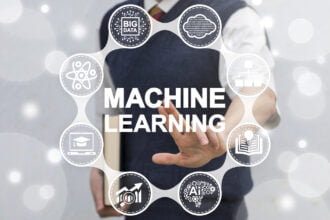In the late 1990s, most web services used cookie cutter approaches to solve user needs. These templated solutions prevailed for nearly two decades, before they began focusing on human centered design.
Human centered design focuses on the needs of the final users. Developers create custom solutions that are tailored to each user. Despite the obvious benefit of human centered design, it is still in its infancy. The reason it is still such a novel concept is that it wasn’t fully possible until the emergence of big data.
Big data has opened new doors for UX developers. They can use tokens to track users and provide a customized user experience.
There are a couple of different ways that big data can be applied to improve human centered design:
- Web providers can use personalization to create a unique experience for every user.
- They can conduct experiments to understand their user-base and provide a UX around their conversion goals.
Both approaches have their merits. The important part is making sure the data is properly collected. Users also need to be carefully monitored, because outputs from big data models are often inaccurate.
O’Reilly States that Big Data and Human Centered Design is the Future of UX
Optimizing for user experience is one of the biggest challenges web services face. O’Reilly points out that it has started becoming much easier. The O’Reilly Strata Conference focuses on the intersection between data science and human centered design.
Ann Spencer has participated in one of these events in Chicago and found that it was an eye-opening experience. After speaking with many big data experts, she discovered that the future of human centered design is more dependent on big data than she ever expected. She intends to chronicle future events and research highlighting the intersection between human centered design and big data.
“I attended the workshop as I wanted to see how DsA’s process and techniques enabled a group of people to openly discuss their data challenges, reach consensus on potential ideas to address those challenges, and turn them into opportunities to act upon. I also wanted to see if I, in collaboration with DsA, could capture some of the process, tips, and techniques and then share these insights with the Strata audience. This post is a first in a collaborative series on human-centered design and data.”
Geneva Centre for Security Policy Finds Big Data Assists with Monitoring and Evaluation
The Geneva Centre for Security Policy recently released a report titled: “Aid Agencies’ Use of Big Data
in Human-centred Design for Monitoring and Evaluation.” This report stated that big data will play a key role in monitoring and addressing issues that complicate human centered design.
Olivier Mukarji, lead author of the study, stated that behavioral models based on big data can “do more harm than good.” He said that they need to be carefully monitored to ensure they work as expected.
Brands Must Expand their Sources of Data Aggregation
There are many ways that brands can collect data on their users. They often restrict themselves to a single source, such as UX website reports from tools such as Crazy Egg or social media platforms. The problem with limiting themselves like this is that they can’t cross-reference data to identify inaccuracies or incompleteness.
They need to expand their data collection efforts as much as possible, without introducing obviously vague or useless data into their SAP development models. It is a good idea to aggregate data from social media, sensors, UX experiments and third-party sources as much as possible.
Big Data is the Future of UX – But it Must Be Implemented Properly
Brands are relying more on big data to bolster the user experience than ever before. However, many models are predicated on bad assumptions for several reasons:
- The quality of the data cannot be authenticated.
- Data is dated.
- Data isn’t complete enough to track the complex nature of human behavior.
The solution is to focus on collecting the most recent, complete and accurate data possible. This is one of the greatest challenges any brand faces, but can also be the best competitive advantage.








